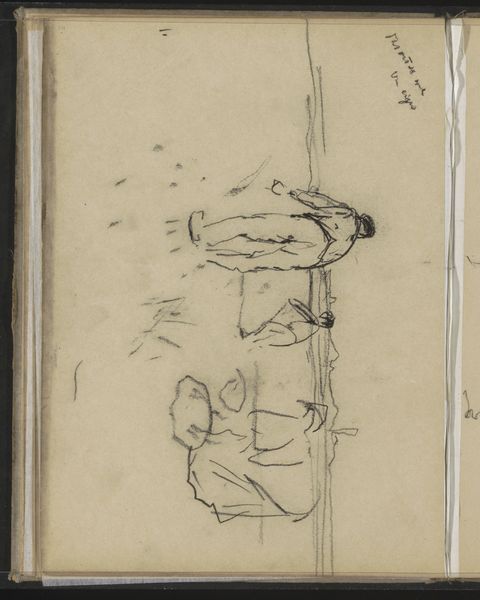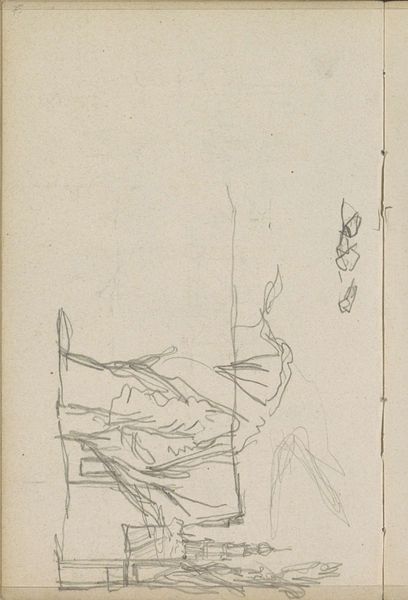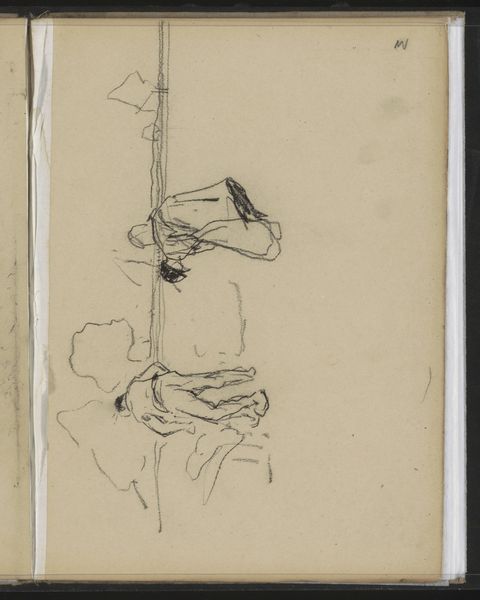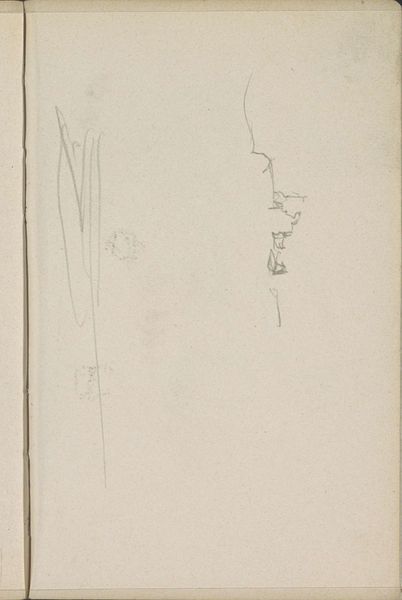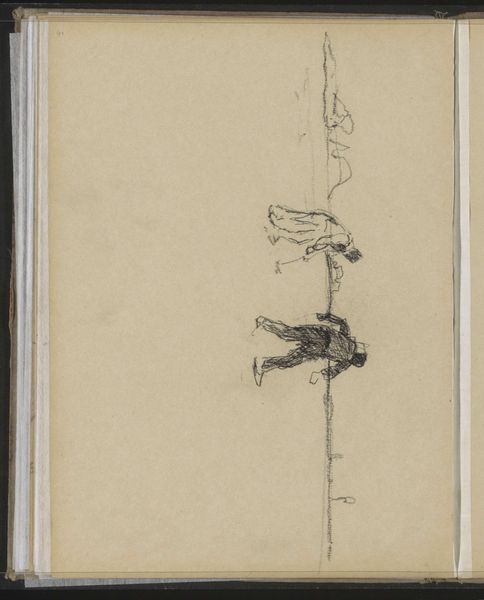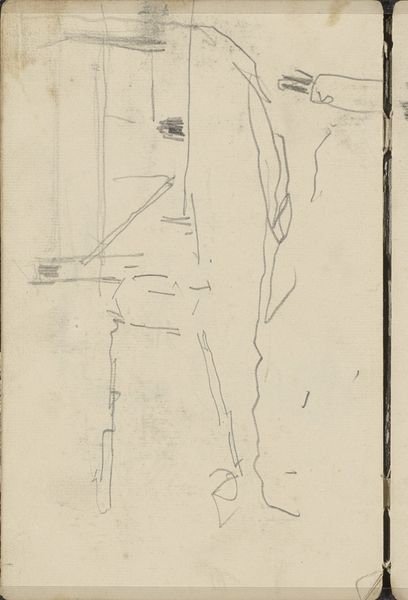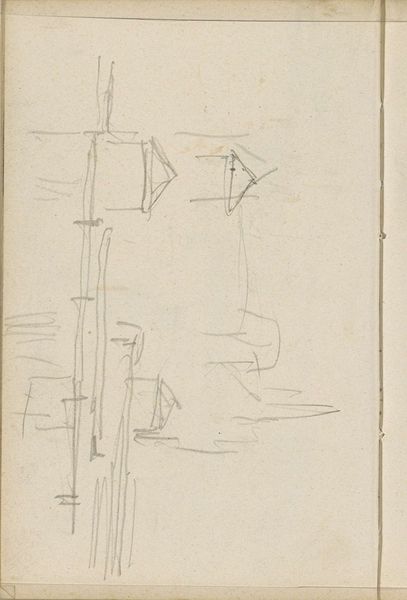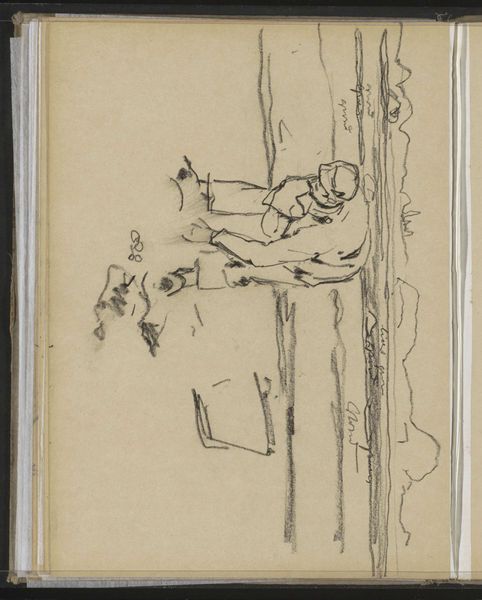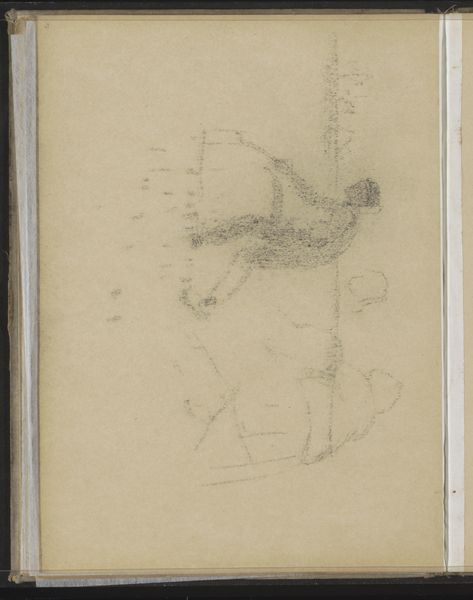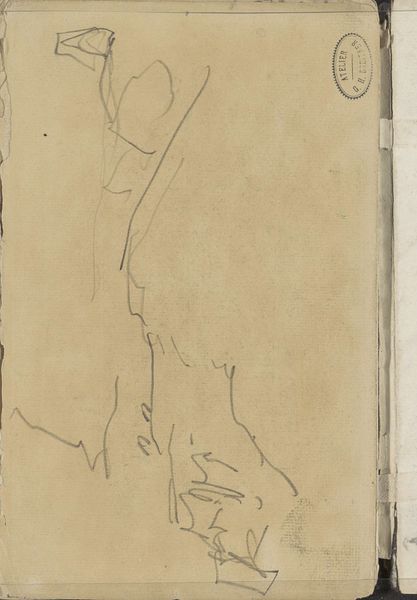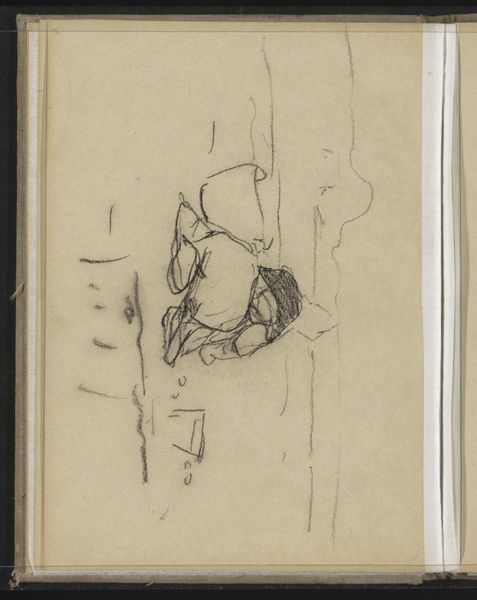
Copyright: Rijks Museum: Open Domain
Curator: Willem Witsen's "Boer met een spade op het land," dating from between 1893 and 1897, presents an intimate glimpse into rural life through the simple act of a farmer digging. What strikes you first about it? Editor: The raw energy! It feels more like a fleeting observation jotted down, a kind of impulsive study made with the minimal use of ink on paper. Curator: Precisely. The drawing style conveys immediacy and an underlying urgency; it's all about the ephemeral quality of a moment witnessed and quickly captured. It invites us to contemplate the working class, or just any person doing hard labor. Editor: For me, that directness speaks to the value and cost of manual labour. Pen and ink allow such swift registration of movement. It shows you've got a human body put to work, and Witsen uses his tools to quickly render that. It makes me consider, what were conditions for farmers like in the 1890s? What are the unseen forces operating to necessitate this physical activity? Curator: A key question that transcends time. This pen sketch, seemingly simple, hints at so much— the socio-economic realities but also the inherent dignity in such work. The fact that it is contained within the leaves of a sketchbook shows the intimacy, but the labor itself exists in public space. Editor: Absolutely. And in its original context, bound within those covers of a sketchbook, you can see a beautiful synthesis here where private contemplation is directly informed by a public act, something that occurs “on the land”. It allows this labor to exist not simply as work but also art object for consumption. Curator: Indeed, the sketchbook format, with its toned paper and unfinished quality, is integral. It's like a visual diary entry that elevates everyday labor to art. Editor: Seeing this labor recorded with such an efficiency makes me rethink what constitutes worthy subject matter. The medium facilitates a fast and egalitarian gaze, and there’s much more to be excavated here! Curator: You are so right! What better place than the Rijksmuseum, an institution built from, sustained by and representative of centuries of labor and art making to have those kinds of questions bubble up in the minds of its patrons. Editor: Cheers to the ongoing interrogation of making visible!
Comments
No comments
Be the first to comment and join the conversation on the ultimate creative platform.
